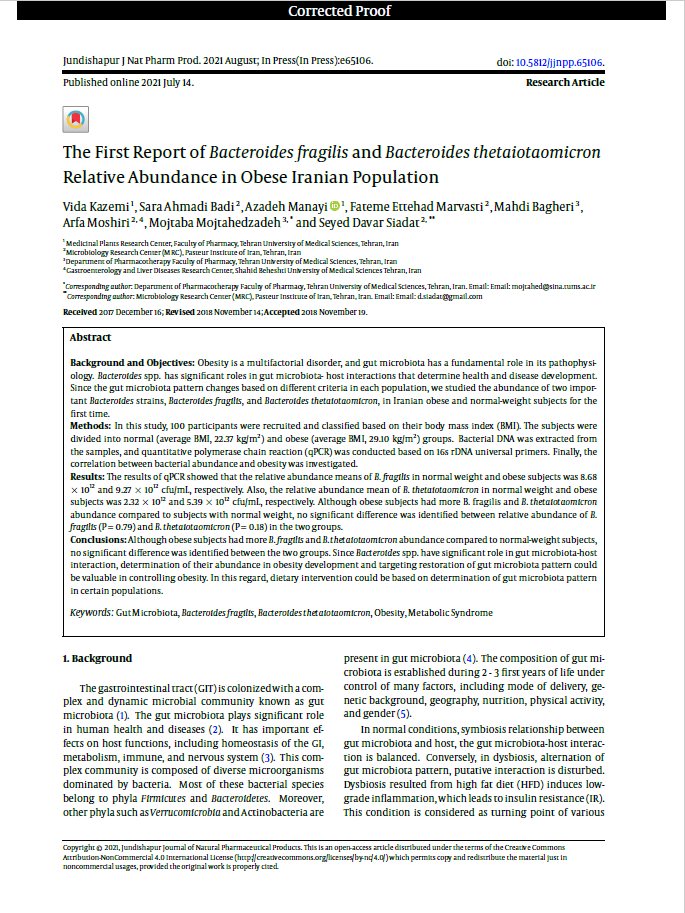Jundishapur Journal of Natural Pharmaceutical Products
Authors:Vida Kazemi , Sara Ahmadi Badi , Azadeh Manayi , Fateme Ettehad Marvasti , Mahdi Bagheri , Arfa Moshiri , Mojtaba Mojtahedzadeh , Seyed Davar Siadat.

Background and Objectives: Obesity is a multifactorial disorder, and gut microbiota has a fundamental role in its pathophysiology. Bacteroides spp. has significant roles in gut microbiota- host interactions that determine health and disease development. Since the gut microbiota pattern changes based on different criteria in each population, we studied the abundance of two important Bacteroides strains, Bacteroides fragilis, and Bacteroides thetaiotaomicron, in Iranian obese and normal-weight subjects for the first time.
Methods: In this study, 100 participants were recruited and classified based on their body mass index (BMI). The subjects were divided into normal (average BMI, 22.37 kg/m2) and obese (average BMI, 29.10 kg/m2) groups. Bacterial DNA was extracted from the samples, and quantitative polymerase chain reaction (qPCR) was conducted based on 16s rDNA universal primers. Finally, the correlation between bacterial abundance and obesity was investigated.
Results: The results of qPCR showed that the relative abundance means of B. fragilis in normal weight and obese subjects was 8.68 × 1012 and 9.27 × 1012 cfu/mL, respectively. Also, the relative abundance mean of B. thetaiotaomicron in normal weight and obese subjects was 2.32 × 1012 and 5.39 × 1012 cfu/mL, respectively. Although obese subjects had more B. fragilis and B. thetaiotaomicron abundance compared to subjects with normal weight, no significant difference was identified between relative abundance of B. fragilis (P = 0.79) and B. thetaiotaomicron (P = 0.18) in the two groups.
Conclusions: Although obese subjects had more B. fragilis and B. thetaiotaomicron abundance compared to normal-weight subjects, no significant difference was identified between the two groups. Since Bacteroides spp. have significant role in gut microbiota-host interaction, determination of their abundance in obesity development and targeting restoration of gut microbiota pattern could be valuable in controlling obesity. In this regard, dietary intervention could be based on determination of gut microbiota pattern in certain populations.